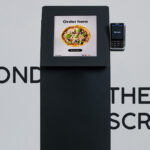Published by
Let’s start with the Customer Journey and Service Blueprint
When it comes to design thinking methodologies, perhaps the two most commonly used mapping activities by practitioners and organizations alike are Customer Journey Maps and Service Blueprints. These artifacts are both powerful visual communication tools. Each one uses qualitative and quantitative research as input, are created collaboratively between teams, and can be refined from low to high fidelity and varying levels of detail. These methodologies complement each other to uncover opportunities and challenges that may impact a customer experience. The magic of the Experience Blueprint however, is somewhere in between a Customer Journey and a Service Blueprint. The format, originally developed by Practical by Design, takes the high-level insights of a single, focused customer journey and marries that to the more complex, back-end details of the service blueprint.
It takes the essential components from both artifacts and uses a simplified and expedited process to extract needed value from the map in order to effectively make decisions and take action within an organization.
Let’s dive in and explore the distinctions between the Customer Journey and the Experience Blueprint.
The Customer Takes Center-Stage
A current state customer journey map is a visual representation that captures the various stages and touchpoints of a customer’s experience. It’s inherently narrative. It focuses on understanding the customer’s emotions, thoughts, actions, and pain points at each step of their journey, like they were talking to us themselves. Journey maps should be seeded by data, both qualitative and quantitative, and often end up being a combination of many different customer’s experiences, aggregated into one extensive customer lifecycle. The journey, along with other artifacts like personas or behavioral archetypes, allow us to step into the customer’s shoes, gaining valuable insights into their needs and expectations. Ultimately, they help us identify areas where we can enhance the experience, fix a pain point, or insert a new product capability.
So how is an Experience Blueprint different from a Customer Journey?
Taking a Peek Behind the Curtain
In contrast to the front-stage, narrative nature of the customer journey, an experience blueprint takes a broader and more comprehensive approach to uncovering opportunities. It not only considers the customer’s perspective but also delves into the underlying processes and infrastructure required to deliver the desired experience. It ensures that your systems, software applications, employees, and tools work in harmony to deliver that exceptional experience. Where the customer journey goes wide, an experience blueprint goes deep, taking a look at a focused portion of the customer journey in order to identify every person, system, or process involved in each step. It helps us identify pain points, potential bottlenecks, and opportunities for improvement and acts as a guide, providing a holistic view of our service ecosystem and enabling us to create a more efficient and effective experience for our customers.
This sounds like a service blueprint, so what’s the difference?
The Show Must Go On
One of the biggest benefits of the experience blueprinting methodology is the concise, focused format – getting you from start to finish in a matter of hours. While the service blueprint has many of the same attributes as an experience blueprint, it often requires a more formal creation process. Instead of focusing on a singular part of the customer journey, the entire lifecycle is documented, often in high fidelity, and usually in both current and future state, in order to visibly and transparently communicate the future of an organization. At Bottle Rocket, we’ve found that the Experience Blueprint gives just the right amount of fidelity to problem solving, and that this focused, collaborative, and guided methodology actually accelerates getting to the ”aha” moments. These insights are enough to help an organization make decisions and move forward, without getting lost in too many details or formalities.
The End Result?
Whether you’re seeking a comprehensive understanding of your organization’s customer experience or seeking to understand where in your ecosystem to invest in improvements, these methodologies serve as the foundation to creating and delivering a customer-centric business. The experience blueprint, in particular, offers a deep exploration into the ecosystem and is uncovered together with a team in a focused and fun environment, providing long-term value in just a few hours.
The end result? An organization that works like a well-oiled machine – powering a frictionless and delightful customer experience that drives satisfaction, fosters loyalty, and fuels business growth.
Share:
Categories
tags
Related Posts


The Great Big Budget Cut: Prioritization


